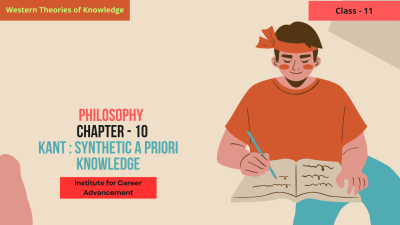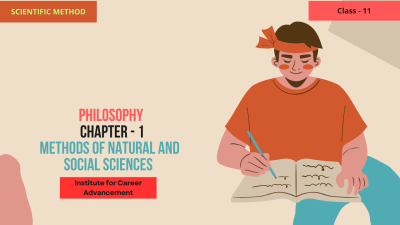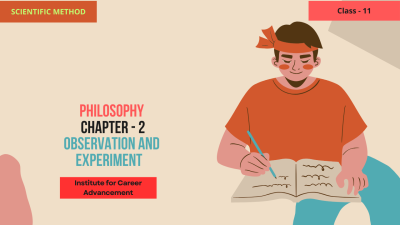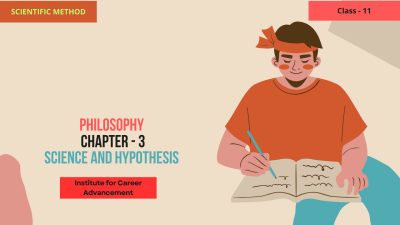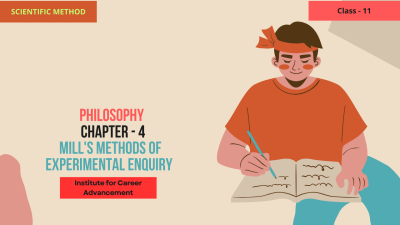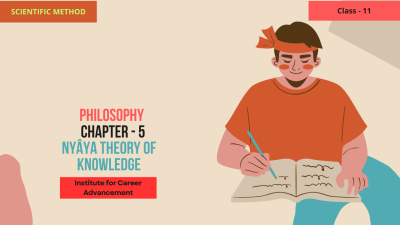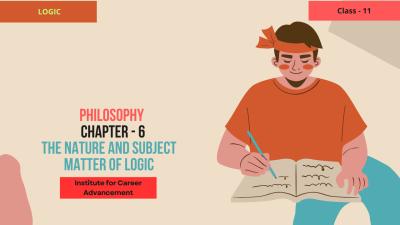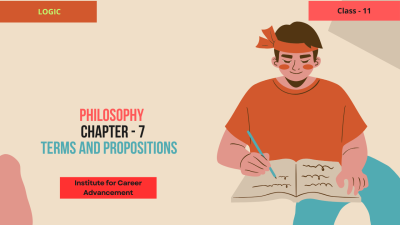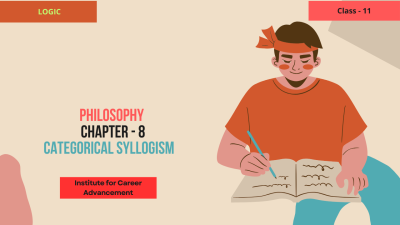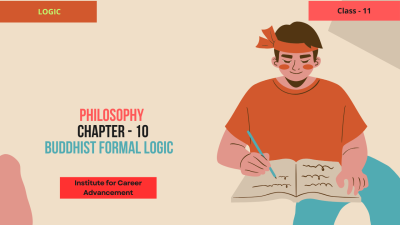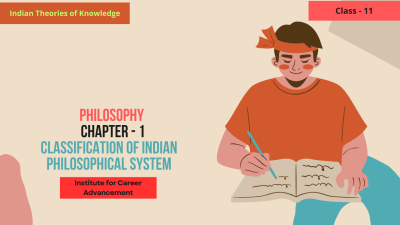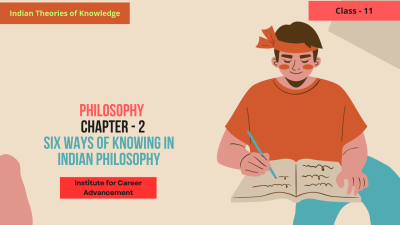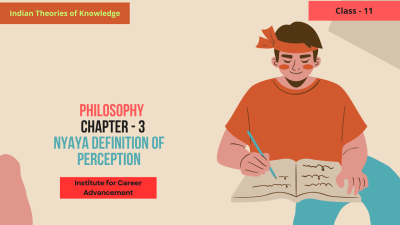Course description
Immanuel Kant, a central figure in modern philosophy, made a groundbreaking contribution with his theory of Synthetic a Priori Knowledge. This concept is crucial in understanding how we acquire knowledge about the world and how it is structured. In a Class 11 philosophy course, students explore Kant's ideas about how certain types of knowledge are both synthetic and a priori, challenging traditional views held by both rationalists and empiricists.
1. Introduction to Immanuel Kant's Philosophy
Background: Immanuel Kant (1724–1804) was a German philosopher who revolutionized Western philosophy with his Critique of Pure Reason. Kant sought to bridge the gap between empiricism (which holds that knowledge comes from experience) and rationalism (which holds that knowledge comes from reason).
The Problem of Knowledge: Kant was concerned with how we can have knowledge about the world that is both universal and necessary, and how such knowledge can be possible if all human knowledge starts from experience.
2. Understanding Kant's Theory of Knowledge
Empiricism vs Rationalism: Kant critiqued the views of empiricists like David Hume, who argued that all knowledge is derived from sensory experience, and rationalists like René Descartes, who argued that knowledge is derived from reason alone.
Kant’s Central Question: Kant asked how knowledge is possible, and what the conditions are for something to be known. He argued that both sensory experience and reason play essential roles in acquiring knowledge.
3. The Distinction Between A Priori and A Posteriori Knowledge
A Priori Knowledge: Knowledge that is independent of experience. It is universal and necessary, meaning it is true in all possible worlds. For example, "2 + 2 = 4" is a truth that is known independently of any sensory experience.
A Posteriori Knowledge: Knowledge that is dependent on experience. It is contingent and empirical, meaning it depends on sensory data. For example, "The sky is blue" is a statement that is known through observation.
4. The Distinction Between Analytic and Synthetic Knowledge
Analytic Knowledge: Knowledge that is true by definition, where the predicate is contained in the subject (e.g., "All bachelors are unmarried"). The truth of these statements is known through analysis of the concepts.
Synthetic Knowledge: Knowledge where the predicate is not contained in the subject, and the truth of the statement is not self-evident (e.g., "The cat is on the mat"). Synthetic knowledge is informative and extends beyond what is contained in the definition of the subject.
5. Kant’s Concept of Synthetic a Priori Knowledge
Synthetic a Priori Knowledge: Kant proposed that there are certain kinds of knowledge that are both synthetic and a priori. These statements are not self-evidently true (so they are synthetic), but we can know them independently of experience (so they are a priori).
Example: The statement "7 + 5 = 12" is synthetic (because the concept of "12" is not contained in the concept of "7 + 5"), but we know it a priori without needing to perform the actual addition through experience.
Kant’s Argument: Kant believed that knowledge like mathematics and certain principles of natural science are synthetic a priori, meaning they extend our knowledge but are also known independently of specific experiences.
6. The Role of the Mind in Knowledge Acquisition
Kant’s Transcendental Idealism: Kant argued that the mind is not a passive receiver of experience but actively shapes our perception of the world. According to him, the mind imposes certain a priori structures (such as space, time, and causality) on the raw data of experience.
Space and Time: Kant argued that space and time are a priori intuitions that structure all experience. They are not learned from experience but are ways in which the mind organizes and processes sensory data.
Categories of Understanding: Kant proposed that the mind uses certain a priori categories (e.g., causality, unity, and substance) to organize and interpret experience. These categories allow us to make sense of the world in a coherent way.
7. The Synthetic a Priori and the Possibility of Metaphysics
Kant’s Critique of Metaphysics: Kant believed that traditional metaphysical claims, such as those concerning the nature of God, the soul, or the universe, could not be known a priori in the traditional sense. However, he also believed that there are some synthetic a priori truths about the world, particularly those that apply to the structural conditions of human knowledge.
Example: The laws of physics, such as the law of causality, are examples of synthetic a priori knowledge for Kant. We cannot observe causality directly, but we know it to be a necessary condition for any experience.
আধুনিক দর্শনের কেন্দ্রীয় ব্যক্তিত্ব ইমানুয়েল কান্ট তাঁর সিন্থেটিক-এ-প্রিয়োরি নলেজ তত্ত্বের মাধ্যমে যুগান্তকারী অবদান রেখেছিলেন। এই ধারণাটি আমরা কীভাবে বিশ্ব সম্পর্কে জ্ঞান অর্জন করি এবং কীভাবে এটি গঠন করা হয় তা বোঝার জন্য অত্যন্ত গুরুত্বপূর্ণ। একাদশ শ্রেণির দর্শনের কোর্সে, শিক্ষার্থীরা কান্টের ধারণাগুলি অন্বেষণ করে যে কীভাবে নির্দিষ্ট ধরনের জ্ঞান কৃত্রিম এবং একটি অগ্রাধিকার উভয়ই, যা যুক্তিবাদী এবং অভিজ্ঞবাদী উভয়েরই প্রচলিত দৃষ্টিভঙ্গিকে চ্যালেঞ্জ করে। 1টি। ইমানুয়েল কান্টের দর্শনের ভূমিকা ইমানুয়েল কান্ট (1724-1804) একজন জার্মান দার্শনিক যিনি তাঁর বিশুদ্ধ কারণের সমালোচনা দিয়ে পাশ্চাত্য দর্শনে বিপ্লব ঘটিয়েছিলেন। কান্ট অভিজ্ঞতাবাদ (যা ধরে নেয় যে জ্ঞান অভিজ্ঞতা থেকে আসে) এবং যুক্তিবাদ (যা ধরে নেয় যে জ্ঞান যুক্তি থেকে আসে) এর মধ্যে ব্যবধানটি পূরণ করতে চেয়েছিলেন। জ্ঞানের সমস্যাঃ কান্ট কীভাবে আমরা সর্বজনীন এবং প্রয়োজনীয় উভয় বিশ্ব সম্পর্কে জ্ঞান অর্জন করতে পারি এবং সমস্ত মানব জ্ঞান অভিজ্ঞতা থেকে শুরু হলে কীভাবে এই ধরনের জ্ঞান সম্ভব হতে পারে তা নিয়ে উদ্বিগ্ন ছিলেন। 2. কান্টের জ্ঞানের তত্ত্ব বোঝা অভিজ্ঞতাবাদ বনাম যুক্তিবাদঃ কান্ট ডেভিড হিউমের মতো অভিজ্ঞতাসম্পন্নদের মতামতের সমালোচনা করেছিলেন, যিনি যুক্তি দিয়েছিলেন যে সমস্ত জ্ঞান সংবেদনশীল অভিজ্ঞতা থেকে উদ্ভূত হয় এবং রেনে ডেসকার্টেসের মতো যুক্তিবাদীরা যুক্তি দিয়েছিলেন যে জ্ঞান কেবল যুক্তি থেকে উদ্ভূত হয়। কান্টের কেন্দ্রীয় প্রশ্নঃ কান্ট জিজ্ঞাসা করেছিলেন যে জ্ঞান কীভাবে সম্ভব এবং কোনও কিছু জানার জন্য শর্তগুলি কী কী। তিনি যুক্তি দিয়েছিলেন যে জ্ঞান অর্জনে সংবেদনশীল অভিজ্ঞতা এবং যুক্তি উভয়ই গুরুত্বপূর্ণ ভূমিকা পালন করে। 3. একটি প্রিয়োরি এবং একটি পোস্টেরিওরি জ্ঞানের মধ্যে পার্থক্য একটি প্রিয় জ্ঞানঃ এমন জ্ঞান যা অভিজ্ঞতা থেকে স্বাধীন। এটি সর্বজনীন এবং প্রয়োজনীয়, যার অর্থ এটি সমস্ত সম্ভাব্য জগতে সত্য। উদাহরণস্বরূপ, "2 + 2 = 4" এমন একটি সত্য যা যে কোনও সংবেদনশীল অভিজ্ঞতা থেকে স্বাধীনভাবে জানা যায়। উত্তরসূরি জ্ঞানঃ এমন জ্ঞান যা অভিজ্ঞতার উপর নির্ভরশীল। এটি আকস্মিক এবং পরীক্ষামূলক, যার অর্থ এটি সংবেদনশীল তথ্যের উপর নির্ভর করে। উদাহরণস্বরূপ, "আকাশ নীল" একটি বিবৃতি যা পর্যবেক্ষণের মাধ্যমে জানা যায়। 4. বিশ্লেষণাত্মক এবং কৃত্রিম জ্ঞানের মধ্যে পার্থক্য বিশ্লেষণাত্মক জ্ঞানঃ সংজ্ঞা অনুসারে সত্য এমন জ্ঞান, যেখানে বিষয়টিতে ভবিষ্যদ্বাণী রয়েছে (e.g., "সমস্ত স্নাতক অবিবাহিত") এই বিবৃতিগুলির সত্যতা ধারণাগুলির বিশ্লেষণের মাধ্যমে জানা যায়। সিন্থেটিক জ্ঞানঃ জ্ঞান যেখানে ভবিষ্যদ্বাণী বিষয় অন্তর্ভুক্ত করা হয় না, এবং বিবৃতি সত্য স্ব-স্পষ্ট নয় (e.g., "বিড়াল মাদুর উপর হয়") কৃত্রিম জ্ঞান তথ্যবহুল এবং বিষয়টির সংজ্ঞায় যা রয়েছে তার বাইরেও বিস্তৃত। 5. কান্টের কৃত্রিম জ্ঞানের ধারণা সংশ্লেষিত একটি প্রিয়োরি জ্ঞানঃ কান্ট প্রস্তাব করেছিলেন যে নির্দিষ্ট ধরনের জ্ঞান রয়েছে যা সংশ্লেষিত এবং অগ্রাধিকার উভয়ই। এই বিবৃতিগুলি স্ব-স্পষ্টভাবে সত্য নয় (তাই এগুলি কৃত্রিম) তবে আমরা এগুলি অভিজ্ঞতা থেকে স্বাধীনভাবে জানতে পারি (তাই এগুলি একটি অগ্রাধিকার) উদাহরণস্বরূপঃ "7 + 5 = 12" বিবৃতিটি কৃত্রিম (কারণ "12" ধারণাটি "7 + 5" ধারণার মধ্যে অন্তর্ভুক্ত নয়) তবে আমরা অভিজ্ঞতার মাধ্যমে প্রকৃত সংযোজন সম্পাদনের প্রয়োজন ছাড়াই এটি একটি অগ্রাধিকার হিসাবে জানি। কান্টের যুক্তিঃ কান্ট বিশ্বাস করতেন যে গণিতের মতো জ্ঞান এবং প্রাকৃতিক বিজ্ঞানের কিছু নীতি কৃত্রিম একটি অগ্রাধিকার, যার অর্থ তারা আমাদের জ্ঞানকে প্রসারিত করে তবে নির্দিষ্ট অভিজ্ঞতা থেকে স্বাধীনভাবেও পরিচিত। 6টি। জ্ঞান অর্জনে মনের ভূমিকা কান্টের অতীন্দ্রিয় আদর্শবাদঃ কান্ট যুক্তি দিয়েছিলেন যে মন অভিজ্ঞতার নিষ্ক্রিয় প্রাপক নয় বরং সক্রিয়ভাবে বিশ্ব সম্পর্কে আমাদের ধারণাকে আকার দেয়। তাঁর মতে, মন অভিজ্ঞতার কাঁচা তথ্যের উপর কিছু প্রাথমিক কাঠামো (যেমন স্থান, সময় এবং কার্যকারণ) আরোপ করে। স্থান এবং সময়ঃ কান্ট যুক্তি দিয়েছিলেন যে স্থান এবং সময় একটি প্রাথমিক অন্তর্দৃষ্টি যা সমস্ত অভিজ্ঞতাকে গঠন করে। এগুলি অভিজ্ঞতা থেকে শেখা হয় না, বরং মন সংবেদনশীল তথ্য সংগঠিত ও প্রক্রিয়াকরণ করে। বোঝার বিভাগঃ কান্ট প্রস্তাব করেছিলেন যে মন অভিজ্ঞতাকে সংগঠিত এবং ব্যাখ্যা করার জন্য কিছু অগ্রাধিকার বিভাগ (e.g., কার্যকারিতা, ঐক্য এবং পদার্থ) ব্যবহার করে। এই বিভাগগুলি আমাদের সুসংহত উপায়ে বিশ্বকে বোঝার সুযোগ করে দেয়। 7. সিন্থেটিক একটি প্রিয়োরি এবং মেটাফিজিক্সের সম্ভাবনা কান্টের মেটাফিজিক্সের সমালোচনাঃ কান্ট বিশ্বাস করতেন যে ঈশ্বর, আত্মা বা মহাবিশ্বের প্রকৃতি সম্পর্কিত ঐতিহ্যবাহী অধিবিদ্যামূলক দাবিগুলি ঐতিহ্যগত অর্থে একটি অগ্রাধিকার হিসাবে জানা যায় না। যাইহোক, তিনি আরও বিশ্বাস করতেন যে বিশ্ব সম্পর্কে কিছু কৃত্রিম এবং প্রাথমিক সত্য রয়েছে, বিশেষত সেগুলি যা মানুষের জ্ঞানের কাঠামোগত অবস্থার ক্ষেত্রে প্রযোজ্য। উদাহরণস্বরূপঃ পদার্থবিজ্ঞানের আইন, যেমন কার্যকারণের আইন, কান্টের জন্য কৃত্রিম একটি অগ্রাধিকার জ্ঞানের উদাহরণ। আমরা কার্যকারণ প্রত্যক্ষভাবে পর্যবেক্ষণ করতে পারি না, তবে আমরা জানি যে এটি যে কোনও অভিজ্ঞতার জন্য একটি প্রয়োজনীয় শর্ত।

